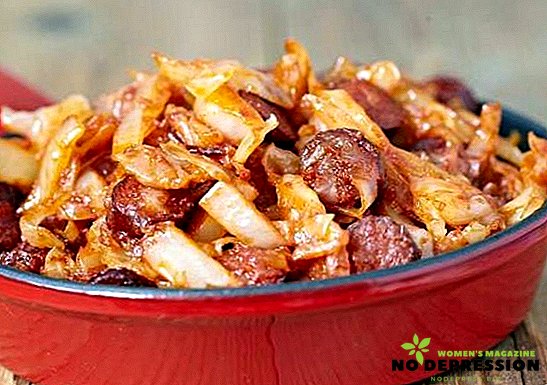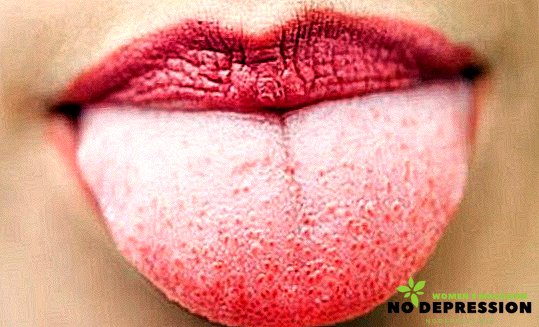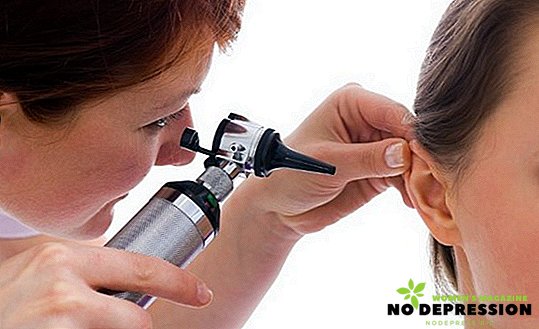The removal of a wisdom tooth is shown when it is in the wrong position, which adversely affects the condition of the adjacent teeth. It can be simple and complex (with impacted and polyurethinized teeth).
A wisdom tooth is a molar, indistinguishable in structure and purpose from other teeth. It is called the "eight", as it is the eighth from the central incisor. Theoretically, a person can have 4 such teeth - 2 each on the upper and lower jaw.

However, in the process of evolution, the size of the human jaw decreased (by 10-12 mm), which is due to the use of softer, thermally processed food. There was a decrease in the chewing load, a consequence - a decrease in the jaws. The number of dental rudiments remained the same. That is why some G8 people erupt (in some cases wrong), while others do not.
"Eights" appear at the age of 18-21 years. If by the age of 27 they had not made themselves known, then, most likely, they would no longer erupt. Although there are cases where the wisdom tooth appears and at an older age (after 40 years). The molars have received their name because they "grow up" during the period of man's maturity.
Reasons for the removal of wisdom teeth
A wisdom tooth is considered a rudiment. With proper development and good condition, it successfully performs its functions, and in old age (when the remaining teeth are destroyed) it becomes a support for dentures.
However, most often the G8 is a source of problems - the eruption causes a lot of complications. The only way to handle them is to remove a tooth.
Indications for the removal of eighth molars:
- a crown jutting in or out of the gum, which injures the oral mucosa;
- the destruction of enamel, dentin or pulp (caries or pulpitis) of the "eight" or of the neighboring molar, the treatment of which is impossible;
- abscess (purulent inflammation);
- lack of space on the alveolar process, which causes the tooth to grow in a horizontal or vertical direction.
In most cases, problems with the wisdom tooth are due to the fact that there is simply no room for it. Starting to erupt, the "eight" rests on the next molar. This causes pain, swelling.
Contraindications
Contraindications for removal are:
- problems with blood clotting;
- 1 and 3 trimesters of pregnancy;
- chronic diseases of the gastrointestinal tract, heart, kidney in the acute phase;
- mental disorders.
Removal of upper wisdom teeth
 Removal of the third molar is not an easy process, because it severely cuts into the gum, has a branched root and vascular system. The upper jaw is less massive than the lower jaw; therefore, the upper wisdom tooth is surrounded by a thinner bone plate and has less branched roots. Removing the top eight is easier and safer.
Removal of the third molar is not an easy process, because it severely cuts into the gum, has a branched root and vascular system. The upper jaw is less massive than the lower jaw; therefore, the upper wisdom tooth is surrounded by a thinner bone plate and has less branched roots. Removing the top eight is easier and safer.
Allocate simple and difficult removal. Simple is shown if the molar completely or 90% cut through the gum. At the same time, it has short straight roots (or a single accrete root).
Simple removal does not imply excision of the gums or other surgical manipulations with a scalpel. Manual forceps or an elevator are used, curved S-shaped forceps may also be required. The latter allow you to get to the remote molar. With the destruction of its caries, as well as for the extraction of root fragments, there are bayonets, or bayonet tongs. They have fully interlocking cheeks, unlike the cheeks of other types of forceps.
An x-ray is taken before the removal procedure. It is necessary that the doctor assessed the structure of the tooth, especially the location of the roots.
Removal is performed in several stages:
- Overlay forceps on the crown so that it is captured entirely.
- Depression under the gum edge of the forceps cheeks.
- Tool fixation.
- Swinging, tooth dislocation from side to side, this process is called luxification.
- Extracting the "eight" from the alveoli - traction.
Immediately after extraction, a cotton swab is inserted into the resulting space to stop bleeding for an average of 7-10 minutes.
Each stage has its own characteristics. So, rocking the tooth should be done in the direction of the cheek. Removing the "eight" is a rotational or pendulum-like movement. The task of the doctor with a simple removal - to pull out a tooth completely with the roots at a time.
Impacted and polyurethane wisdom teeth
 A tooth that is formed, but not erupted, is referred to as impacted. Visually, it looks hidden in the gums. Any tooth can be impacted, but most often - the "eight". If 1-2 tubercles of a wisdom tooth appear from under the gum, then they talk about its polyuretion.
A tooth that is formed, but not erupted, is referred to as impacted. Visually, it looks hidden in the gums. Any tooth can be impacted, but most often - the "eight". If 1-2 tubercles of a wisdom tooth appear from under the gum, then they talk about its polyuretion.
The impacted molar is usually removed. Indications for surgical procedures are:
- inflammatory process;
- pain, swelling in the gums;
- the location of the tooth in the follicular cyst;
- violation of bite, the inability to quality dental care;
- wrong location of the rendered "eight" (inclination to the cheek or the adjacent tooth, reversal, upside-down position).
In other cases, if the impacted tooth does not bother, it is not removed.

Pure teeth often cause pericoronitis - inflammation of the gingival hood. This is due to the fact that under it accumulate food debris, bacteria.
As a result, inflammation develops, the symptoms of which are pulsating pains radiating to different parts of the face, the inability to chew and simply open the mouth, an increase in body temperature to 39 ° C, a general deterioration of the condition.
You can solve the problem by removing a polyurethinized tooth or cutting out the hood.
Removal Procedure
If it is necessary to extract the impacted and polyurethinized teeth, this means “complex” removal. It is also accompanied by radiography and anesthesia.
The stages of "difficult" removal:
- Dissection of the gums with a scalpel, separation of the gingival flap.
- When a molar is under the bone layer, its cutting out (resection) with the help of a drill.
- Removing the "eight" (fully or in parts after preliminary sawing).
- Cleaning the hole with a curette (a tool resembling a spoon) and treating it with an antiseptic solution.
- When drilling the bone tissue there is a need to fill it. To do this, use synthetic analogues, such as tricalcium phosphate, hydroxyapatite.
- Return gum flap in place. Suturing.
The procedure lasts 40-50 minutes. After 2 days, the patient should come to the next appointment. Bone tissue resection should be performed at low revolutions of the cooling drill to prevent bone death.
When pericoronite and no evidence for removal resorted to excision of the gingival hood. First, the doctor examines the X-ray data, then produces local anesthesia. The dissection procedure involves removing an extra portion of the gum with a scalpel so that nothing obscures the molar region. If even a small portion of the gum tissue remains, re-inflammation will begin. After excision, antiseptic treatment of the wound is performed, healing composition is applied.

Anesthesia - which type of anesthesia to choose?
When wisdom teeth are removed, local anesthesia is usually used — an injection of Lidocaine or Articaine. 2 injections are made - on the external and internal (palatal) sides. Thanks to this technology, a more reliable anesthetic effect is achieved, which comes already 5 minutes after the injection.
If you immediately remove 2 "eights" in the upper jaw, the doctor may suggest general anesthesia. It is also indicated for dentophobia, intolerance to anesthetic components. Despite the attractiveness of tooth extraction under general anesthesia, this procedure is contraindicated in a number of diseases. It is not carried out for children, pregnant women, the elderly. It should be understood that anesthesia is always a risk. Finally, the cost of removal increases markedly.
Modern pharmaceuticals offer a lot of painkillers that interchange each other. The dentist, having studied the history and familiarized with the peculiarities of the patient's health, will select the optimal anesthetic. That is why it is so important to listen to the recommendations of the doctor in the choice of anesthetic composition.
For example, for diseases of the cardiovascular system, analgesics that have adrenaline are excluded. Pregnant contraindicated drugs that have a vasoconstrictor effect.
Most often they carry out an infiltration injection with an anesthetic, in which the solution is injected into the transitional fold of the gum. If the first technique fails, palatine or tubular anesthesia is performed.
To increase the time of exposure to an anesthetic of articaine, adrenaline or norepinephrine is added to it. Having a vasoconstrictor action, they reduce the rate of resorption of the anesthetic, that is, increase the time of its concentration in the working area. The use of adrenaline together with anesthetic allows for painless removal within 1 hour.
The quality of anesthesia depends not only on the type of drug, but also on the patient's condition. So, a strong fear and excitement of the patient become the reason that the "freeze" does not work.
Consequences and complications
Compliance with the removal technique and recommendations for the care of the hole complications after removing the "eight" rarely occur.
One of them is alveolitis, or inflammation of the hole. It will be found the very next day after removal and will show itself with aching pain, swelling, unpleasant smell from the mouth, temperature rise to 38-39 ° C.
With a strong compression of the crown, especially if the tooth is prone to caries, a fracture is possible. In this case, the dentist will have to remove the debris in parts. Crack is characteristic of a fracture. By the way, a nearby tooth may break. This usually happens when the inexperience of the dentist, or if the abutment tooth is too weak, does not have a subsequent "neighbor."
If the forceps are too deep and force is applied, a fracture of the alveolar process is possible. In this case, the sharp parts at the fracture site are polished to avoid the development of inflammation. The resulting wound will require more attention during treatment and care, the patient is prescribed antibiotics.
Too brute force at the time of extraction of the tooth can cause perforation of the bottom of the maxillary sinus. An unpleasant, but rather rare complication in which there is a perforation (hole) between the jaw and the maxillary sinus.
Transaction price

The removal of a wisdom tooth is included in the list of procedures that are done free of charge at state clinics under the OMS policy. You may have to pay for anesthesia - an average of 100-500 rubles, depending on the composition.
In private clinics, the removal procedure will cost 3,000–4,000 rubles, and for complex extirpation of impacted and polyurethinized teeth, 10,000–15,000 rubles.
Conclusion
Such a rudiment as the wisdom tooth may not disturb a person or cause inflammation, a violation of bite. In the latter case, the "eight" to be removed.
With compliance with the technology of removal and postoperative care complications do not occur.
This video shows the process of removing the wisdom tooth in the upper jaw.
Reviews
Varvara, Moscow
About a month ago, it began to break the gum, I did not even understand which of the teeth hurt. Went to the doctor, he appointed an x-ray. It turned out that the problem is in the wisdom tooth, it grew almost horizontally. And although he had not even cut through, he pressed on the neighboring ones.
Went to the surgeon. He did anesthesia, so I didn’t feel pain during the procedure, but the sensations and sounds were not pleasant. It lasted 40 minutes, after which the doctor put gauze in the hole and sent me home.
An hour later, anesthesia began to recede, and I felt an unbearable pain. Peel Ketorol. Also, the doctor prescribed an antibiotic and Nimesil. The pain of day 4 was terrible, then the aching pain symptoms remained. Again went to the doctor, he appointed a rinse and UHF. In short, I suffered a week. Now everything has passed, an X-ray showed another impacted tooth. I'm afraid to think that I have to go through this again.
Nikolay, Kirov












